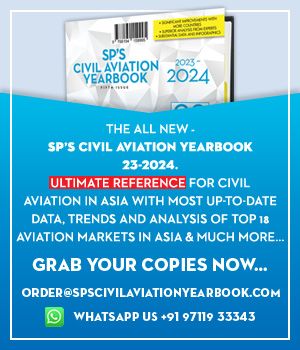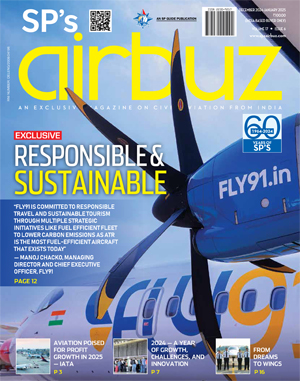Grounded Ambitions
Exploring the diverse challenges faced by aspiring Pilots in India
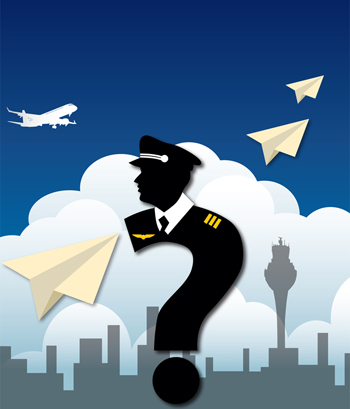
India, with its rapidly growing aviation sector, has seen a boom in the number of aspiring pilots. However, behind the rising interest in aviation, lies a slew of challenges that hinder the smooth progression from training to becoming a licensed pilot. While commercial airlines increasingly rely on new pilots to fill their ranks, the journey for aspiring aviators is far from straightforward. From outdated infrastructure and inadequate training standards to corruption and rising costs, the challenges faced by future pilots in India are numerous.
A DIFFICULT BEGINNING
To become a pilot, you need training, and that was right where the problems begin from all aspiring pilots. Anyone looking to become an aviator has to select from where to complete their ground training and/or flight training, and it is not an easy decision, with making financial decisions and ruling out flight training institutions which fall out of one’s budget, evaluating safety and so on. More often than not, aspiring pilots in India choose to complete training abroad.
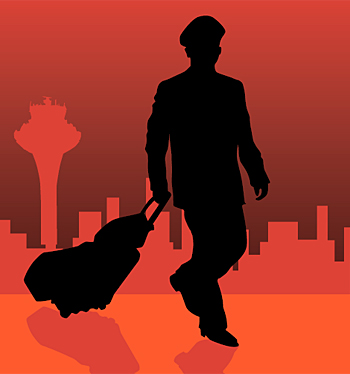
OVEREMPHASIS ON THEORETICAL KNOWLEDGE
An overemphasis on theoretical knowledge is a significant issue in India’s aviation training, and this problem extends beyond aviation into other fields of study as well. One of the core subjects in pilot training is Air Navigation, yet the curriculum often places disproportionate focus on the intricate details of aircraft systems and airport equipment, rather than on the actual navigation skills pilots need. While a foundational understanding of aircraft systems is absolutely necessary, the level of detail tested in exams goes beyond what is practical for most pilots as most of the knowledge is then tested by the airlines in their specific entrance exams and also while studying about aircraft type-specific technicalities in their type rating curriculum. In fact, some of the equipment and systems covered in the student pilot curriculum are no longer in use in modern aircraft. This overemphasis on system-specific knowledge comes at the expense of testing the core skills of navigation itself. In comparison to more progressive training systems, such as the Canadian model, which I have experienced alongside the DGCA exams, the emphasis is placed on practical navigation skills—such as using maps, performing essential calculations, and developing real-world problem-solving abilities—rather than getting bogged down in obsolete details.
From outdated infrastructure and inadequate training standards to corruption and rising costs, the challenges faced by future pilots in India are numerous
In commercial aviation, each type of emergency has a specific checklist to guide pilots through the process which is compulsory to be followed, and in stressful situations, pilots rely on these tools rather than the extensive theoretical knowledge they memorised during training. The testing bodies for student pilots in many other countries focus more on real world flying skills as compared to our country. Does that mean that the quality of their pilots is worse than our own? That would be a whole another debate all together as which pilot is better or not depends on way too many factors.
EXPLOITATION AND CORRUPTION AT FTIS
The excessive focus on theoretical knowledge in pilot training has led to another significant issue: the rise of ground schools and coaching institutes that charge exorbitant fees for preparation. Many of these institutes are run by retired or senior pilots, and their prices can escalate quickly, especially as students opt for more reputed institutions. Fees for individual subjects can run into tens of thousands of rupees, with the total cost for comprehensive training easily reaching lakhs. Competition among institutes has led to a proliferation of new classes. This has created a trend where most aspiring pilots feel compelled to enroll in such institutes, as peer pressure and the belief that these classes are necessary for success continue to perpetuate the cycle. While it’s true that these classes can be beneficial for some students, the problem arises when a majority of future pilots rely on the same set of institutes, enabling them to charge inflated fees. The coaching institutes also extend their services beyond ground school training, offering specialised classes for airline entrance exams, interviews, and other pilot assessments. Some claim to have insider knowledge, with access to previous exam questions or extensive sample papers, further luring students into their expensive programmes. However, alternatives exist that can help students prepare effectively without the heavy financial burden. The DGCA website, for example, provides lists of recommended study materials, including textbooks and resources that aspiring pilots can use to prepare on their own. Additionally, several online platforms offer affordable courses, lectures, and sample papers with detailed explanations—at a fraction of the cost charged by traditional institutes. By seeking out these alternative resources, students can save significant amounts of money while still covering the essential topics needed to succeed in their exams.
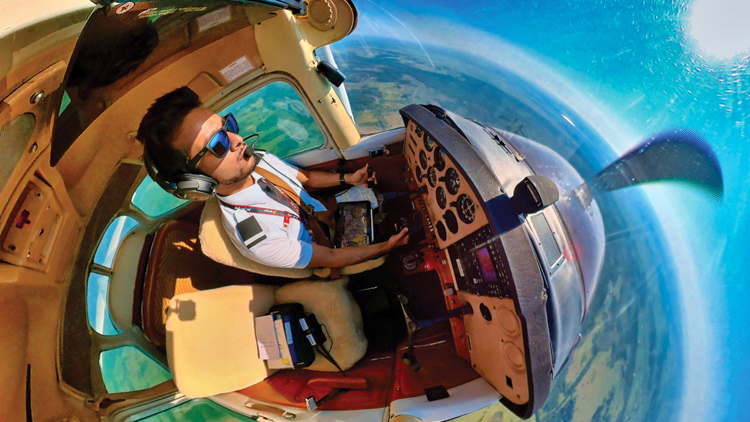
The focus on maximising profits by FTIs leads to situations where students can be asked to pay extra for things like “refresher” courses or additional flight hours that should be included in the standard training package. This exploitation is especially rampant in a sector where demand for pilot training often outstrips the available supply, creating an environment ripe for abuse. Another case of a similar issue that tends to happen at flight schools is that aspiring pilots hailing from well to do families offer to pay a premium over the typical per hour rates of aircraft rental charged for the training to expedite the same, which leaves the majority of the students, who are only willing to pay the basic rate for the flight hours stranded, waiting for their chance to go for their next training flight.
Corruption is another significant issue in India’s aviation sector. Middlemen and agents often demand bribes to expedite the training or licensing process, which creates a barrier to students who are unable or unwilling to pay extra fees. Inconsistent and opaque procedures for obtaining licenses further delay the process. Pilots often have to wait for long periods to receive their licenses due to bureaucratic inefficiencies and corruption, which can lead to frustration and financial strain.
INADEQUATE INFRASTRUCTURE AND SCHEDULING INEFFICIENCIES
One of the major hurdles that aspiring pilots face when beginning their flying training is poor scheduling at flight schools. Many schools operate with limited resources, which results in inefficient training schedules. A lot of flying schools do not have fixed schedules that are given out in advance to help the student prep for their flight, often having all students come to the FTI’s premises, stay there the whole day and end up not even flying as whether or not they get to fly solely depends on the instructors and the CFI (Chief Flight Instructor). Students often experience long gaps between flights, leading to a lack of consistent hands-on experience. The infrequent training schedules, coupled with inadequate flying hours, can have a detrimental effect on the progress of student pilots, delaying their journey to becoming qualified professionals.
The quality of infrastructure at many flight schools in India leaves much to be desired. Flight simulators, which are crucial for training in modern aviation, are often outdated or unavailable. Many flight schools suffer from a shortage of properly maintained aircraft, and there are concerns about the safety standards of the planes used for training. The lack of proper airport lighting at smaller and remote airports, and the absence of qualified air traffic controllers, leaves students at risk. In these locations, students are often tasked with tasks like ensuring aircraft remain clear of each other, work typically managed by professionals, when resources are thin or unavailable. This compromise in safety is a critical issue, which not only endangers the lives of students but also undermines the quality of aviation training.
The aviation sector in India is in dire need of reform, from a lack of proper training facilities and maintenance to outdated regulations and corruption
Unrealistic weather requirements for pilot training are one of the most significant challenges that aspiring pilots face in India. While safety must always be the top priority, the existing weather restrictions often lead to unnecessary delays, financial strain, and frustration among students.
While the weather minima established by the Directorate General of Civil Aviation (DGCA) are largely on par with those of major aviation markets, the challenge stems from the adverse weather conditions. In the northern regions, for instance, pollution persists for a significant portion of the year. Also, seasonal phenomena such as heavy rains, fog, and other region-specific weather conditions often reduce visibility below the prescribed minima.
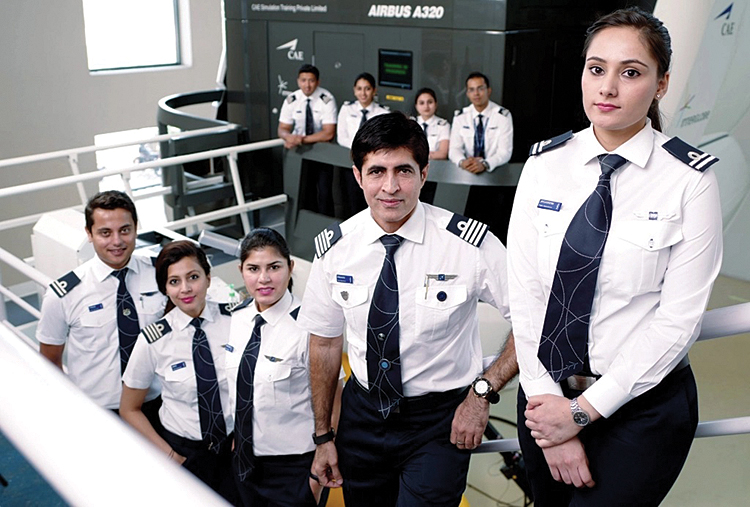
Flight schools located at major airports in India face significant challenges due to ATC-imposed restrictions on training flights, particularly when these restrictions arise from the manipulation of weather reports or overly stringent weather minima. While the primary concern of ATC is maintaining the smooth flow of commercial traffic, a balance must be struck to ensure aspiring pilots receive adequate flying training and exposure to real-world flying conditions. These tactics are often employed by ATC because student pilots, due to their inexperience, may potentially disrupt the efficient management of air traffic. Controllers may resort to such measures for convenience, avoiding the extra effort of managing student pilots who require more attention and can occasionally complicate airspace coordination. To address this issue, it is crucial to enhance coordination between ATC and flight schools. ATC should be better equipped to manage the complexities of training flights from Flight Training Institutes (FTIs) operating at their airport and surrounding airports. This would help minimise disruptions and create a more effective training environment for future pilots.
ESCALATING COSTS AND LACK OF FINANCIAL AIDS
The rising costs of pilot training in India are a significant barrier for many aspiring aviators. The demand for trained pilots has surged as commercial airlines expand, but this has also driven up the cost of training, making it less accessible to a larger pool of candidates. The high cost of training, coupled with a lack of sufficient scholarships or financial aid programmes, forces many students to take on large amounts of debt, which can take years to pay off. Furthermore, once pilots do complete their training, they face limited career growth opportunities. Many aspiring pilots often struggle to meet the hours required for more senior roles. The result is a stunted career trajectory that does little to address the industry’s growing demand for skilled professionals.
NEED FOR REFORMS
The aviation sector in India is in dire need of reform. From a lack of proper training facilities and maintenance to outdated regulations and corruption, the path to becoming a pilot is filled with obstacles. If India is to maintain its position as a key player in the global aviation market, it must address these systemic issues and ensure that aspiring pilots receive the quality training and support they need to succeed. By investing in better infrastructure, updating training standards, improving safety protocols, and tackling corruption, the country can foster a new generation of pilots who are well-equipped to meet the challenges of modern aviation.




